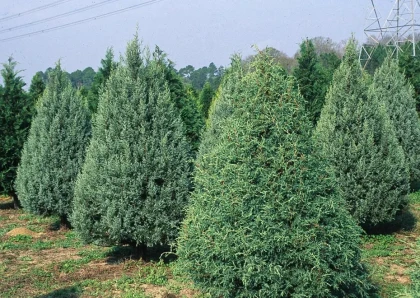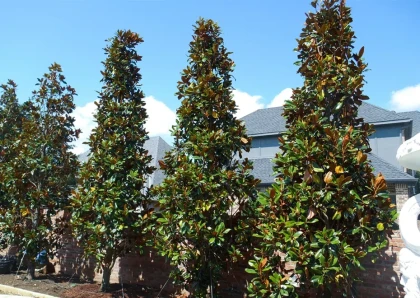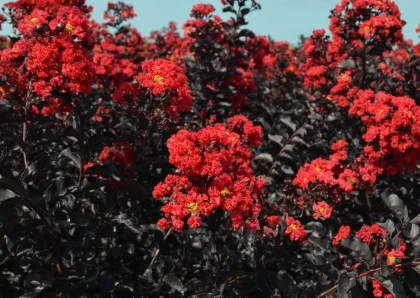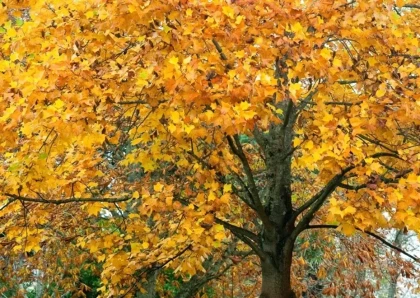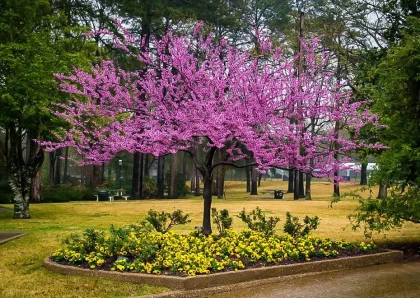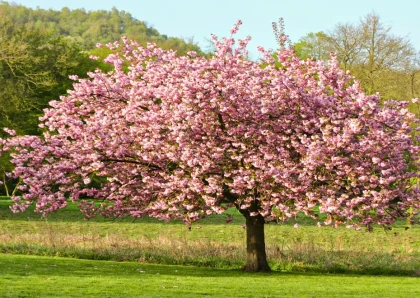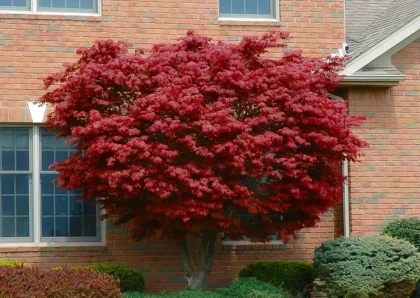
Ginkgo Tree
Overview
History of the Ginkgo Tree
The Ginkgo tree, scientifically known as Ginkgo biloba, is one of the oldest living tree species on Earth. It has a rich history dating back over 270 million years. The Ginkgo tree is considered a living fossil, as it has remained virtually unchanged for millions of years, surviving through various geological eras and even the extinction of dinosaurs.
Detailed Description of the Ginkgo Tree
The Ginkgo tree is a unique and fascinating species. It is a deciduous conifer, meaning it has cones and sheds its leaves annually. The tree has an upright and columnar growth habit, with fan-shaped leaves that are deeply divided into distinct lobes. The leaves turn a beautiful golden-yellow color in the fall, creating a stunning display. The Ginkgo tree is dioecious, meaning individual trees are either male or female. Female trees produce fruit-like structures that contain edible seeds.
Types of Ginkgo Trees
There are several cultivars of the Ginkgo tree, each with its own unique characteristics. Some popular cultivars include 'Autumn Gold,' known for its brilliant yellow fall foliage, and 'Princeton Sentry,' which has a narrow and upright form, making it suitable for urban landscapes with limited space.
Importance of the Ginkgo Tree
The Ginkgo tree holds great cultural and medicinal significance. It is revered in many cultures for its longevity, resilience, and symbolic value. The tree's leaves and seeds have been used in traditional medicine for centuries, believed to have various health benefits. Additionally, the Ginkgo tree is an important ornamental tree, prized for its beauty, shade-providing canopy, and ability to tolerate urban environments.
How to Care for a Ginkgo Tree
To ensure the health and vitality of a Ginkgo tree, it is important to follow these care guidelines:
- Planting: Choose a location with well-drained soil and adequate sunlight. Dig a hole slightly larger than the root ball, place the tree, and backfill with soil. Water thoroughly after planting.
- Watering: Provide regular watering, especially during the tree's early years. Once established, the Ginkgo tree is drought-tolerant, but occasional deep watering during dry periods is beneficial.
- Pruning: Prune the tree during its dormant season to remove dead, damaged, or crossing branches. This helps maintain its shape and promotes healthy growth.
- Fertilization: Apply a balanced fertilizer in early spring to provide necessary nutrients. Follow the package instructions for application rates.
- Pest and Disease Control: The Ginkgo tree is generally resistant to pests and diseases. However, monitor for common issues such as aphids or fungal diseases, and take appropriate action if necessary.
Benefits of the Ginkgo Tree
The Ginkgo tree offers numerous benefits, including:
- Ornamental Beauty: The Ginkgo tree is prized for its unique foliage, vibrant fall colors, and overall aesthetic appeal. It adds beauty and elegance to any landscape.
- Environmental Resilience: Ginkgo trees are highly adaptable and can tolerate urban pollution, heat, and various soil conditions.
- Medicinal Uses: The leaves and seeds of the Ginkgo tree have been used in traditional medicine for their potential cognitive and circulatory benefits.
- Ecological Importance: The Ginkgo tree provides habitat and food for various bird species and other wildlife.
How to Plant a Ginkgo Tree
Follow these steps to plant a Ginkgo tree:
- Choose a Location: Select a sunny spot with well-drained soil.
- Prepare the Hole: Dig a hole that is wider and slightly shallower than the root ball.
- Planting: Place the tree in the hole, ensuring the root collar is level with or slightly above the soil surface. Backfill with soil and gently firm it around the roots.
- Watering: Water thoroughly after planting and provide regular watering during the tree's establishment period.
- Mulching: Apply a layer of mulch around the base of the tree, keeping it a few inches away from the trunk. This helps conserve moisture and suppress weed growth.
Different Types of Wood Products from the Ginkgo Tree
The wood of the Ginkgo tree is highly valued for its durability and unique characteristics. It is commonly used in the production of furniture, flooring, cabinetry, and decorative items. The wood's distinct grain patterns and golden hues add a touch of elegance to any woodworking project.
Cons of the Ginkgo Tree
While the Ginkgo tree offers many benefits, there are a few considerations to keep in mind:
- Foul-Smelling Fruit: Female Ginkgo trees produce fruit-like structures that emit a strong and unpleasant odor when they fall to the ground. This can be a nuisance for some homeowners.
- Female Tree Allergies: The pollen produced by male Ginkgo trees can cause allergies in some individuals. Female Ginkgo trees do not produce pollen but may cause allergies due to the odor of their fruit.
FAQs (Frequently Asked Questions)
Q: Are Ginkgo trees suitable for small gardens?
A: Yes, there are dwarf cultivars available that are better suited for smaller spaces. These cultivars have a more compact growth habit and require less space.
Q: Do Ginkgo trees require pruning?
A: Ginkgo trees generally require minimal pruning. However, occasional pruning to remove dead or damaged branches can help maintain the tree's health and shape.
Q: Are Ginkgo trees resistant to pests and diseases?
A: Ginkgo trees are known for their resilience against pests and diseases. However, they may occasionally face issues such as aphid infestations or fungal diseases. Regular monitoring and proper care can help prevent and manage these problems.
No listings available
Related Products
Questions & Answers
What do you want to know about this product?
Reviews (5)
TreeHugger42
An Ancient Tree That Leaves an Everlasting Impression
The Ginkgo tree's resilience and unique fan-shaped leaves have captivated me. It provides shade and beauty to my landscape.
LeafLover77
Splendor Brings Joy to My Backyard
I planted a Ginkgo tree, and its vibrant golden foliage never fails to mesmerize. A true standout among the other trees!
DendroMaster12
Adds Charm to Any Setting
This ancient Ginkgo tree has unparalleled beauty. Its unique leaves and resilience make it a treasure in my garden.
NatureLover123
That Captivates the Senses
The Ginkgo tree's distinct form and stunning foliage create a picturesque scene. It has become the centerpiece of my landscape.
Arborista99
That Stands the Test of Time
This remarkable Ginkgo tree is a living fossil that adds beauty to my garden. Its golden foliage in fall is simply breathtaking!





